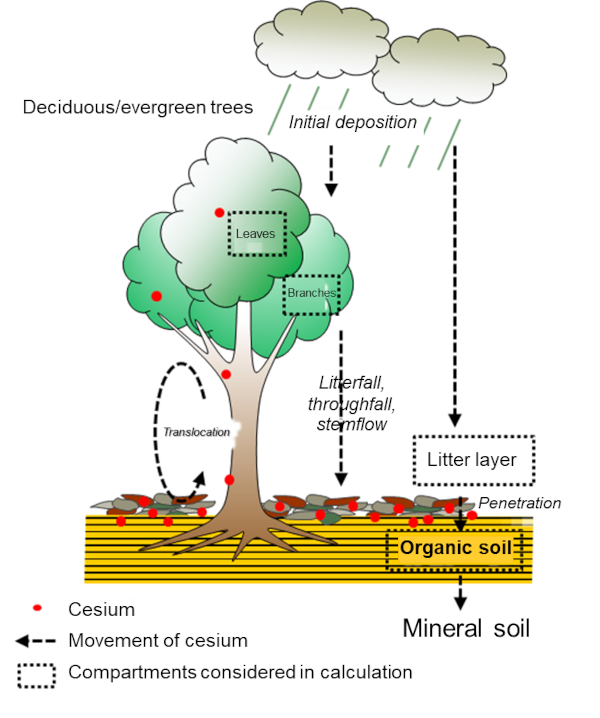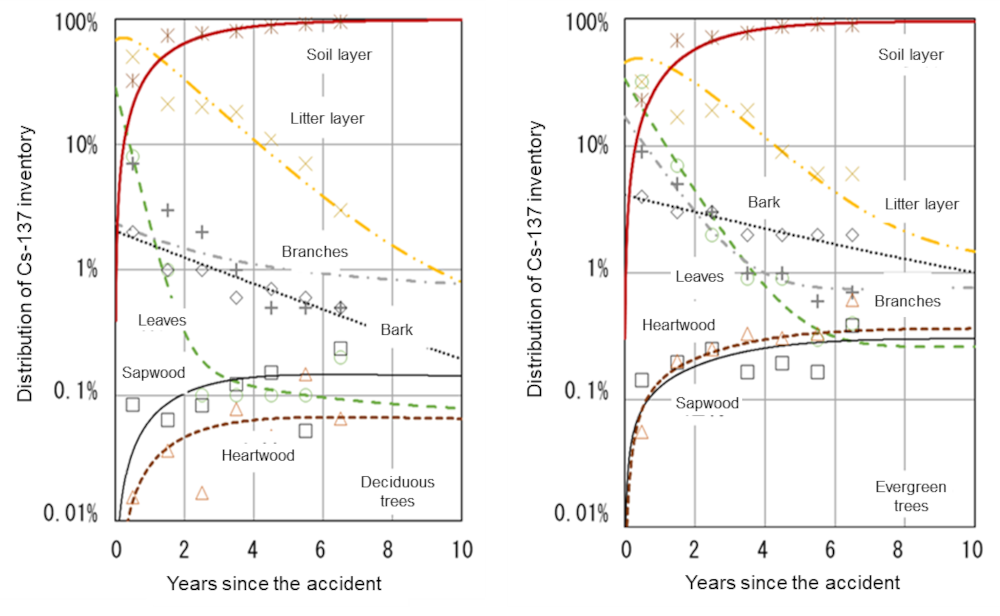Radioactivity Dynamics in forests
(2019)
QHow does the distribution of radioactive cesium concentrations in forests change over time?【Example of analysis】
ARadioactive cesium concentrated mainly on leaves, branches and the litter layer in forests in an early stage after the accident. Then, it has migrated over time from the top part of trees to the litter layer, and from the litter layer to the underneath soil layer.

Fig.1 Conceptual illustration of the model to calculate cesium movement in forest

Fig.2 Comparison of simulation results and measured values
- JAEA developed a compartment model to calculate the movement of cesium in forests.
- Chronological changes in radioactive cesium concentration in different parts of forests obtained by this model fit well with the measured values. The blocking rates at the time of fallout and migration trends from crowns to the litter layer, both calculated under the same conditions, were in good agreement with the measured values.
- Radioactive cesium concentrated mainly on leaves, branches and the litter layer in forests in an early stage after the accident. Then, it has migrated over time from the top part of trees to the litter layer, and from the litter layer to the underneath soil layer.
Related articles
- How does radioactive cesium in forests move from trees to the ground surface? 【Movement in throughfall and stemflow】
- How does radioactive cesium in forests move from trees to the ground surface? 【Movement as particulate and dissolved states】
- Will cesium distribution in forests continue to change in the future?
- Do sediment with high radioactive cesium concentration continue to be deposited on river bottoms?
- Is there a continuous input of cesium contamination to rivers from forests?
